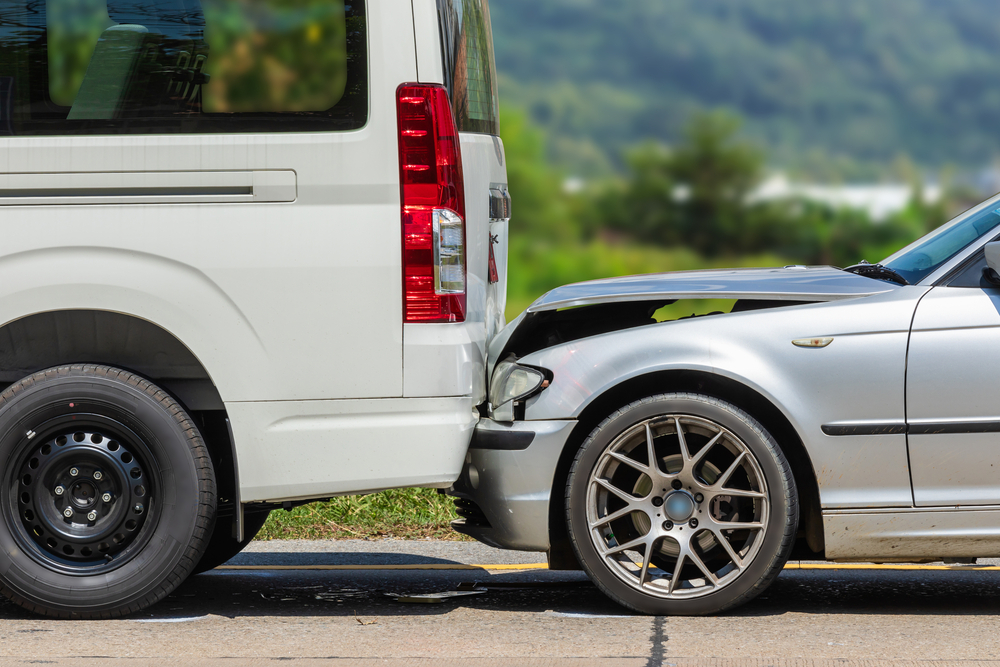Accidents cause damage, not matter how minor. Yet, some accidents cause may more trouble than others, such as a front-end or rear-end collision. Inevitably, you are going to need to get your car repaired. The question arises, though, about which collision requires more work and does more damage. Let’s consider the differences between front-end repair and rear-end repair in Gloucester County, NJ, as well as where you can take your vehicle for its much needed repairs.
Key Takeaways
- Front-end and rear-end collisions differ in damage patterns, affecting distinct vehicle components in Gloucester County, NJ.
- Front-end collisions typically incur more extensive damage than rear-end collisions due to the force involved and the vulnerability of front-end parts.
- After a collision, front-end repairs involve structural assessment, part replacement, and frame realignment, while rear-end repairs focus on trunk, bumper, and taillight damage, with potential frame alignment.
Front-End vs Rear-End Collisions
Front-end collisions and rear-end collisions are two common types of car accidents in Gloucester County, NJ, each with its own characteristics and consequences. Knowing how each happens and the damages is important for drivers, as you will know what to expect and what to look for after.
Front-end collisions occur when the front of one vehicle impacts the rear of another vehicle or an object. These accidents often result from factors like sudden braking, distracted driving, or failure to maintain a safe following distance. The impact in front-end collisions can cause damage to the vehicle’s front bumper, grille, hood, headlights, and even engine components, leading to a range of injuries for occupants depending on the severity of the collision.
On the other hand, rear-end collisions happen when the front of one vehicle strikes the rear of another vehicle. These accidents are often caused by tailgating, sudden stops, or driver distraction. Damage in rear-end collisions typically affects the rear bumper, trunk, and taillights, with injuries commonly including whiplash, neck and back injuries, and head trauma. Understanding the distinctions between front-end and rear-end collisions is crucial for drivers to anticipate risks and take preventive measures on the road.
Which Collision Causes More Damage?
Both types of collisions can cause damage to your vehicle, but front-end collisions are generally worse. This is due to two things: the force involved and the location of your vehicle’s moving parts. First, even if a vehicle is moving slow and hits your car on the front end, the dispersal of the force is going to go further, because it is not as padded as the rear end. Second, as the front end crumples, more parts are damaged, such as the radiator, engine, and reservoirs for oil and other fluids. The rear end, in comparison, usuall has a bumper and a trunk, and not much else to worry about.
The Differences of Front-End vs Rear-End Collision Repair
Front-end and rear-end collisions require different approaches when it comes to repair due to the distinct nature of the damage incurred. Front-end collisions typically result in damage to the vehicle’s front bumper, grille, hood, headlights, and engine components. Repairing front-end damage often involves assessing structural integrity, replacing damaged parts, realigning the frame if necessary, and ensuring proper functionality of safety features like airbags.
On the other hand, rear-end collisions commonly damage the rear bumper, trunk, and taillights, with potential impact on the frame or chassis. Repairing rear-end damage may involve repairing or replacing affected components, addressing any structural issues, and ensuring proper alignment of the rear body panels.
Additionally, both types of collision repair may require refinishing work to restore the vehicle’s appearance. The specific repair process and techniques employed will depend on the extent of the damage and the vehicle’s make and model. Ultimately, skilled technicians in collision repair centers use specialized equipment and expertise to restore vehicles to their pre-accident condition, prioritizing safety and quality craftsmanship.
Does Front-End Repair or Rear-End Repair Cost More?
Due to the nature of a front-end collision and all the things that can be damaged, front-end repair is often far more costly than rear-end repair. This is particularly true when there has been extensive damage to the critical components, such as the frame or the engine. Not only are the replacement parts expensive, but the work is labor intensive, meaning that you will be paying a premium for the work involved.
However, rear-end collisions can also incur significant costs, especially if there is damage to the vehicle’s frame or if high-tech features like parking sensors or backup cameras are affected. Ultimately, the cost of repair for both types of collisions will depend on the specific circumstances of the accident and the condition of the vehicle.
Looking for a Collision Repair Shop in Gloucester County, New Jersey?
At the end of the day, no one wants to get into any kind of collision. Unfortunately, there is always a risk of getting into an accident where you or someone else collides with the front or rear of your vehicle. When that happens, your vehicle may be damaged. Front-end collisions tend to require more extensive repairs, especially when the collision happens at a higher speed.
If you find yourself looking for a collision repair shop in Gloucester County, NJ after an accident, turn to Elmer’s Auto Body. With many years of experience and certified technicians at our three South Jersey locations, we can help restore your vehicle to its pre-accident condition. Schedule your appointment today by calling our Mt. Ephraim, Sewell, or Medford location or by filling out the online form. It’s time to get your car back on the road.

